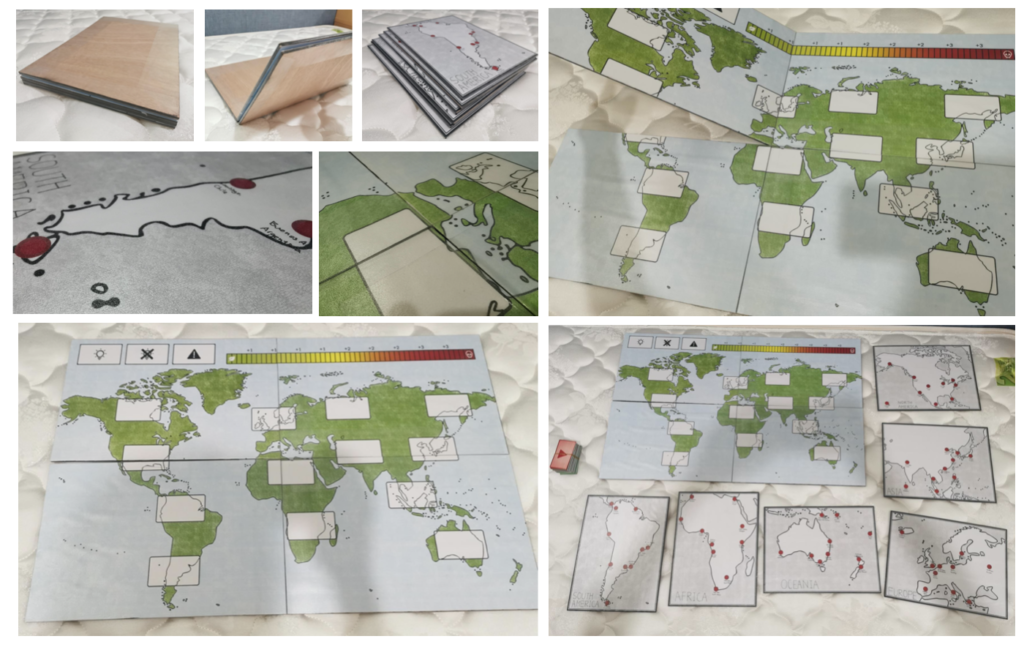Edu-games 2021
|
Michelle Yang, 9L. I’m going to design a sustainable and educational board game to educate primary school students that we need to take actions on preventing climate change and protecting the arctic animals. This is relevant to the global context because first, climate change is a global issue, as a member of the human society, we should care about this problem since it had already made lots of negative impact on the planet, for example increasing flood in coastline regions; melting glaciers and ice; and the topic of my board game, the increasing extinction and habitat loss of arctic animals. Secondly, as a designer of a game, using sustainable materials to create the game is being increasingly promoted recently. To better educate the kids and not exerting more pressure (creating more plastic materials) on the nature, we are using sustainable materials to create the product. The client of my product is the teachers and parents of primary school kids, and the target audience is primary school students. It is important to teach primary school kids about climate change because it is already affecting human activities and more importantly, the activities of the arctic animals. According to Worldwide Fund of Nature (WWF), an international wilderness and nature preservation organization found in 1961, over 15 of arctic animals are facing the risk of extinct: “We could lose more than 30% of the world’s polar bears by 2050 if we don’t urgently tackle climate change.” In order to make the kids be aware of the impact of climate change on arctic animals and take actions, designing a board game is needed since kids can learn rapidly through playing games. As stated by TEDed video, kids can learn two significant skills from playing games, one of them is the ability to control their actions and emotions. This is why I choose to design a board game, since it can stimulate the kids to learn knowledge, at the same time, develop the skill of control through following the rules.
Thomas Han, 9Q
Jasmine Wang, 9L. I created it to teach elementary school students about global warming and the role that carbon emissions play in it. I hope to make them aware that today carbon emissions have become the most important way to produce carbon dioxide, and the damage to the global climate is self-evident, the countries with the most carbon emissions are able to reach more than a billion (or more) emissions every year, and the purpose of what we are trying to do is to make more people aware of the seriousness of the situation. So far, sustainability is one of the main goals of our design, and I would prefer to use environmental friendly material in the choice of materials, and the source of my teaching game is based on the current warming situation, melting icebergs and rising average temperature, but many people are not aware of it yet, and what I want to do is What I want to do is to find hope from the new generation, to make them understand and not ignore this. problem.
Serene Zhang, 9L. By creating an educational board game that adjust the knowledge about climate change for the primary school students. I would be focusing on energy transition (which is the process of changing burning fossil fuel to renewable energy such as wind, solar) this aspect as the main goal I will teach. It is important for the primary students to understand since climate change (global warming) as been a serious topic and had truly affect our live, the temperature rising and uncertain rainfall directly influence our living condition. According to the EPA United States Environmental Protection Agency renewable energy have zero carbon and greenhouse produce, which would directly solve the climate change issue. As for energy transition it is the most effective solution that people and government had put forward and driven action into, my goal it to let the primary student not only understand what is climate change, but also how can we deal with this issue, what are the possible solution. Using board games is easy for my target audience which is the primary school student aging around 6-11years old to easily understand the topic, and to ensure my client which is the primary school parents and teacher would clearly identify my teaching goal. I am planning to make a game that will ask the student to explore the different renewable energy.
Lillian Ning, 9L
Amy Gao, 9O
Zifeng Zhu, 9N
Coco Xiao, 9N
Jessica Guo, 9N
Cassy Qiao 9O
Ada Li 9O |












